Fitness recumbent bikes offer a comfortable and low-impact way to improve your cardiovascular health and overall fitness. These bikes feature a reclined seating position that takes pressure off your joints, making them a great option for individuals of all fitness levels, including those with injuries or joint pain.
Recumbent bikes provide a full-body workout, engaging your legs, core, and upper body. They are particularly beneficial for strengthening your lower body, improving your cardiovascular endurance, and burning calories. The adjustable resistance levels allow you to customize your workout intensity, making it suitable for both beginners and seasoned athletes.
Introduction to Recumbent Bikes
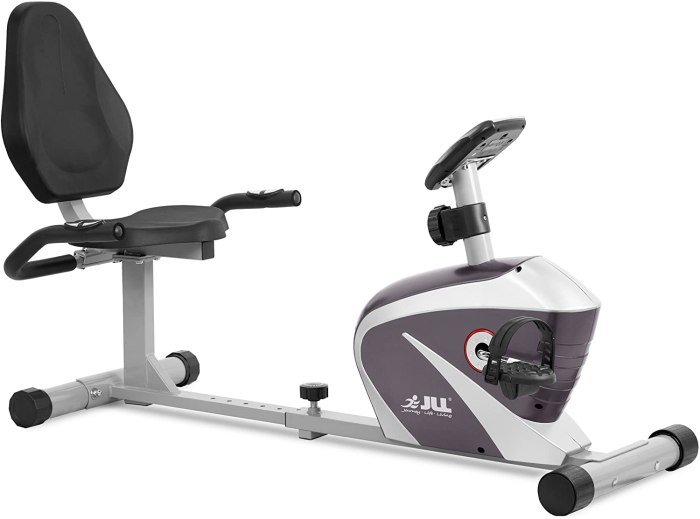
Recumbent bikes are a unique and increasingly popular type of bicycle that offers a comfortable and ergonomic riding experience. Unlike traditional bicycles, recumbent bikes feature a reclined seating position, with the rider’s legs extended forward and their back supported. This design provides a more relaxed and less stressful ride, making it an ideal choice for individuals seeking a comfortable and enjoyable cycling experience.Recumbent bikes offer a wide range of benefits for fitness enthusiasts.
The reclined seating position promotes proper posture, reducing strain on the back, neck, and wrists. The increased stability of recumbent bikes allows for a smoother ride, minimizing the risk of falls and injuries. Moreover, the low center of gravity makes them easier to balance, making them a suitable option for riders of all skill levels.
Key Features and Components
Recumbent bikes are designed with a variety of features that contribute to their unique riding experience. Understanding these components is crucial for choosing the right recumbent bike for your needs and preferences.
Seating Position
Recumbent bikes are characterized by their reclined seating position, which places the rider in a more relaxed and upright posture. This position distributes weight more evenly, reducing strain on the back, neck, and wrists. The backrest provides support, allowing for longer rides without discomfort.
Frame and Drivetrain
Recumbent bikes typically have a low-slung frame that provides a stable and secure ride. The drivetrain, which includes the chain, gears, and derailleurs, is designed for efficient power transfer and smooth shifting.
Handlebars and Controls
Recumbent bikes feature handlebars that are typically located in front of the rider, allowing for comfortable steering and control. The handlebars often incorporate controls for shifting gears, adjusting brakes, and other functions.
Wheels and Tires
Recumbent bikes typically have larger wheels than traditional bicycles, providing a smoother ride and better stability. The tires are designed for low rolling resistance, maximizing efficiency and minimizing effort.
Brakes
Recumbent bikes are equipped with reliable braking systems, often utilizing disc brakes for superior stopping power and control. The brakes are designed to provide a smooth and predictable braking experience.
Accessories
Recumbent bikes can be customized with a range of accessories to enhance comfort and functionality. Common accessories include mirrors, baskets, fenders, and lights.
Types of Recumbent Bikes
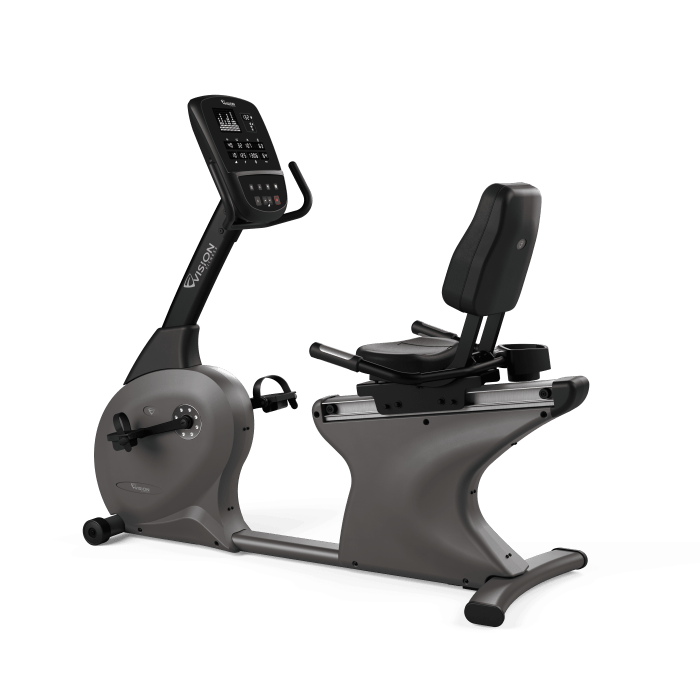
Recumbent bikes come in various designs, each with its unique advantages and disadvantages. Understanding the different types can help you choose the best fit for your fitness goals and preferences.
Types of Recumbent Bikes
Recumbent bikes are categorized based on their design and features. They can be broadly classified into three main types:
- Standard Recumbent Bikes: These are the most common type of recumbent bikes, characterized by a reclined seating position and a long wheelbase. They offer a comfortable and ergonomic riding experience, making them ideal for long-distance rides and casual cycling.
- Low-Back Recumbent Bikes: These bikes feature a more upright seating position with a shorter wheelbase, making them more maneuverable and agile. They are well-suited for shorter rides and urban commuting.
- Tandems: These bikes are designed for two riders, with one rider in front and the other in a reclined position behind. They offer a unique and social riding experience, perfect for couples or friends who enjoy cycling together.
Pros and Cons of Each Type of Recumbent Bike
Each type of recumbent bike has its own set of advantages and disadvantages, making it suitable for different fitness goals and riding styles.
Standard Recumbent Bikes
- Pros:
- Comfortable and ergonomic riding position.
- Suitable for long-distance rides.
- Low impact on joints.
- Cons:
- Less maneuverable than other types of recumbent bikes.
- Can be bulky and difficult to store.
Low-Back Recumbent Bikes
- Pros:
- More maneuverable and agile than standard recumbent bikes.
- More compact and easier to store.
- Offers a more upright riding position, which can be beneficial for some riders.
- Cons:
- Less comfortable than standard recumbent bikes.
- Not as suitable for long-distance rides.
Tandems
- Pros:
- Provides a unique and social riding experience.
- Can be more efficient than riding solo.
- Offers a different perspective on cycling.
- Cons:
- Requires two riders.
- Can be more challenging to maneuver than single-rider recumbent bikes.
- More expensive than single-rider recumbent bikes.
Popular Recumbent Bike Models
There are numerous recumbent bike models available on the market, each catering to different needs and preferences. Here are some popular examples of each type:
Standard Recumbent Bikes
- Schwinn Recumbent Bike: This model is known for its comfort and affordability. It features a wide, padded seat and adjustable handlebars for a customized fit.
- Sun EZ-3 Recumbent Bike: This bike is popular among long-distance riders, offering a comfortable and efficient riding experience. It has a lightweight frame and a high-quality drivetrain.
- Greenspeed Recumbent Bike: This bike is known for its high-end features and sleek design. It is designed for both casual and competitive riders, offering a smooth and responsive ride.
Low-Back Recumbent Bikes
- Rans Stratus Recumbent Bike: This bike is a popular choice for urban commuters, offering a comfortable and maneuverable ride. It has a compact design and a lightweight frame.
- Bacchetta Bella Recumbent Bike: This bike is known for its sleek design and high-quality components. It is designed for both casual and competitive riders, offering a smooth and responsive ride.
- TerraTrike Rover Recumbent Bike: This bike is a popular choice for off-road riding, featuring a durable frame and wide tires. It is designed for riders who want to explore trails and rough terrain.
Tandems
- Co-Motion Tandem Recumbent Bike: This bike is known for its high-quality construction and comfortable riding experience. It is designed for both casual and competitive riders, offering a smooth and responsive ride.
- Catrike Tandem Recumbent Bike: This bike is a popular choice for couples who enjoy cycling together. It features a compact design and a lightweight frame.
- Burley Tandem Recumbent Bike: This bike is designed for riders who want to share the experience of cycling with a friend or family member. It features a durable frame and a comfortable riding experience.
Benefits of Recumbent Bike Training
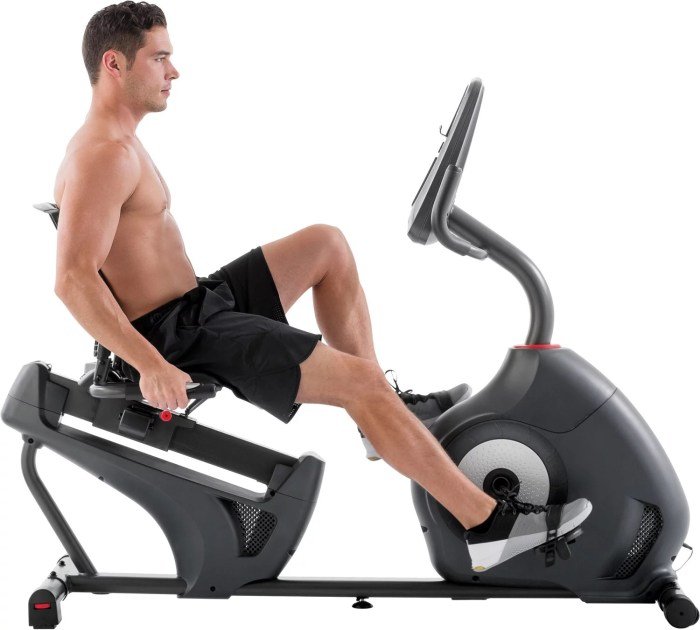
Recumbent bikes offer a low-impact, comfortable, and effective way to improve your overall fitness. They provide numerous benefits for cardiovascular health, muscle strength and endurance, and can be particularly beneficial for individuals with specific health conditions or injuries.
Cardiovascular Health
Regular recumbent bike training can significantly improve cardiovascular health by strengthening the heart and lungs. The consistent pedaling motion elevates your heart rate, promoting blood flow throughout the body and improving cardiovascular function.
A fitness recumbent bike offers a low-impact workout that’s gentle on your joints. If you’re interested in a career in the healthcare industry, you might consider exploring opportunities at Cigna, a leading health insurance provider. Cigna health care careers offer a variety of roles, from clinical to administrative, and can be a rewarding path for those passionate about improving people’s lives.
Whether you’re looking for a personal fitness goal or a career change, there are many avenues to explore to achieve your aspirations.
- Reduced risk of heart disease:Recumbent cycling helps lower blood pressure, improve cholesterol levels, and reduce the risk of heart disease.
- Improved lung capacity:As you pedal, your body requires more oxygen, which strengthens your lungs and improves their capacity.
- Increased endurance:Regular recumbent cycling can increase your cardiovascular endurance, allowing you to exercise for longer periods without fatigue.
Muscle Strength and Endurance
While recumbent bikes may not engage as many muscle groups as traditional upright bikes, they still provide a great workout for the lower body.
- Strengthened legs:Recumbent bikes work the quadriceps, hamstrings, glutes, and calves, strengthening these muscle groups.
- Improved core stability:Maintaining a stable posture on the recumbent bike engages your core muscles, improving overall stability.
- Enhanced endurance:Recumbent bike training can increase your muscle endurance, allowing you to exercise for longer periods without fatigue.
Benefits for Individuals with Specific Health Conditions or Injuries
Recumbent bikes are a great option for individuals with specific health conditions or injuries because of their low-impact nature and adjustable features.
- Joint pain:The supportive backrest and seat of recumbent bikes reduce stress on joints, making them ideal for individuals with arthritis, back pain, or knee problems.
- Balance issues:Recumbent bikes provide a stable platform, making them suitable for individuals with balance issues or dizziness.
- Rehabilitation:Recumbent bikes are often used for rehabilitation purposes, as they allow individuals to gradually increase their fitness levels without putting excessive strain on their bodies.
Setting Up Your Recumbent Bike for Fitness
Getting the right fit on your recumbent bike is crucial for comfort, efficiency, and preventing injuries. It’s a bit different than setting up a traditional road bike, as you’ll be in a more reclined position. You’ll need to adjust the seat, handlebars, and other components to ensure proper alignment and support.
Adjusting Your Recumbent Bike for Proper Fit, Fitness recumbent bike
Before you start riding, it’s important to make sure your bike is adjusted correctly. Here’s a step-by-step guide to help you find the perfect fit:
- Seat Adjustment:Start by adjusting the seat height so that your knees are slightly bent when the pedals are at their lowest point. Your hips should be slightly higher than your knees. If you feel any strain or discomfort in your knees, adjust the seat up or down until you find a comfortable position.
- Handlebar Adjustment:Next, adjust the handlebars to a comfortable height and distance from the seat. Your elbows should be slightly bent when you’re holding the handlebars. If you’re feeling any strain in your shoulders or neck, adjust the handlebars up or down until you find a comfortable position.
- Backrest Adjustment:Some recumbent bikes have adjustable backrests. Adjust the backrest to a position that supports your back without feeling too restrictive. You want to maintain a slight recline without feeling like you’re slumping.
- Foot Strap Adjustment:Adjust the foot straps to a comfortable position where your feet are securely in place. Your toes should be slightly pointed downwards, and your heels should not be touching the pedals.
Resistance Levels for Different Fitness Goals
Resistance levels are a crucial aspect of recumbent bike training. Adjusting the resistance allows you to control the intensity of your workout and achieve different fitness goals.
- Low Resistance:Low resistance is ideal for beginners, recovery rides, and long-distance cycling. It allows you to maintain a comfortable pace for extended periods, focusing on endurance and cardiovascular health.
- Medium Resistance:Medium resistance is perfect for building strength and endurance. It challenges your muscles while maintaining a sustainable pace for a moderate workout duration.
- High Resistance:High resistance is best for interval training, sprints, and building explosive power. It allows you to push your limits and challenge your cardiovascular system for shorter bursts of intense effort.
Recumbent Bike Accessories
While not essential, certain accessories can enhance your recumbent bike training experience.
- Heart Rate Monitor:A heart rate monitor helps you track your workout intensity and ensure you’re staying within your target heart rate zone. This allows you to optimize your workouts for specific fitness goals.
- Water Bottle Holder:Staying hydrated is essential during any workout, and a water bottle holder makes it convenient to keep water within reach. It helps you avoid dehydration, especially during longer rides.
Recumbent Bike Training Programs: Fitness Recumbent Bike
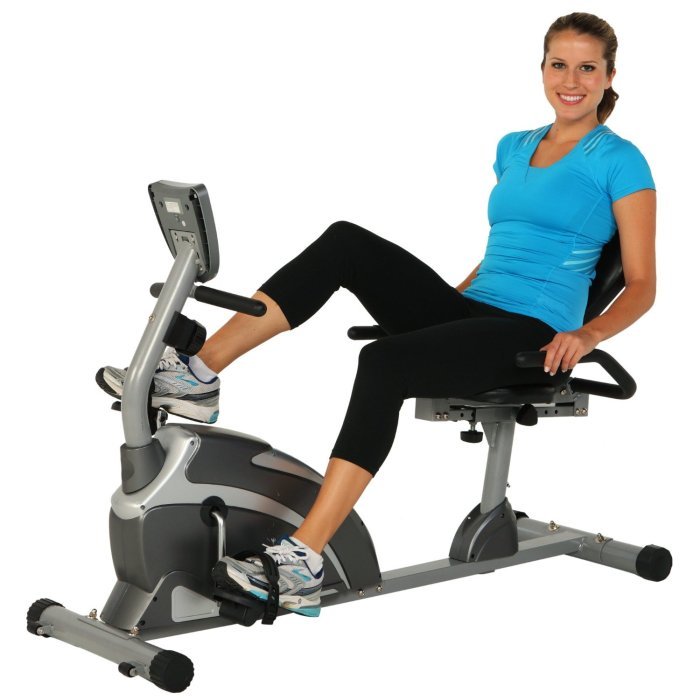
Recumbent bike training programs can be tailored to suit different fitness levels and goals. Whether you are a beginner or an experienced rider, there are programs that can help you achieve your desired results. Here are some examples of recumbent bike training programs.
Beginner Recumbent Bike Training Program
This program is designed for individuals who are new to recumbent bike training or who have been inactive for a while. It focuses on building a foundation of fitness and gradually increasing the intensity and duration of workouts.
- Warm-up: Start with 5 minutes of light pedaling at a low resistance level. This helps prepare your body for the workout.
- Workout: Ride for 20 minutes at a moderate intensity level. You should be able to talk comfortably during this portion of the workout.
- Cool-down: Finish with 5 minutes of light pedaling at a low resistance level. This helps your body recover from the workout.
Repeat this program 3-4 times per week, gradually increasing the duration and intensity of your workouts as you become more fit.
A fitness recumbent bike is a great way to get a low-impact cardio workout, and it’s a particularly good choice for people with joint pain or limited mobility. While you’re working on your fitness, you can also treat yourself to a little pampering with a subscription to the Allure Beauty Box , which delivers a curated selection of beauty products right to your door.
Once you’ve finished your workout, you can relax and enjoy the latest beauty finds, knowing you’re taking care of both your physical and mental well-being.
Advanced Recumbent Bike Training Program
This program is designed for experienced riders who are looking to improve their fitness and performance. It incorporates interval training, hill climbs, and other variations to challenge your body and help you reach your goals.
- Warm-up: Start with 10 minutes of light pedaling at a low resistance level.
- Workout: Perform 4-6 intervals of high-intensity pedaling for 1-2 minutes, followed by 2-3 minutes of recovery pedaling at a low resistance level. Adjust the duration and intensity of the intervals based on your fitness level. You can also incorporate hill climbs by increasing the resistance level for a set period of time.
- Cool-down: Finish with 5 minutes of light pedaling at a low resistance level.
Repeat this program 3-4 times per week, adjusting the intensity and duration of the workouts as needed.
Importance of Incorporating Variations
Incorporating intervals, hills, and other variations into your recumbent bike training is crucial for improving your fitness and preventing plateaus.
- Intervals: Interval training involves alternating between high-intensity and low-intensity periods. This helps improve your cardiovascular fitness, endurance, and speed.
- Hills: Riding hills increases the resistance level, challenging your muscles and improving your strength and power.
- Other Variations: You can also incorporate other variations into your training, such as resistance bands, core exercises, and cross-training activities. This helps to engage different muscle groups and prevent boredom.
Safety and Precautions
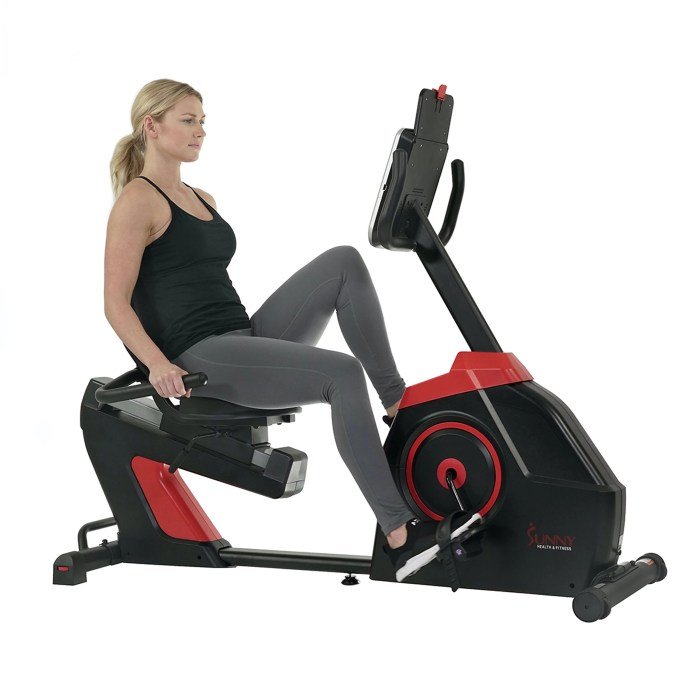
Recumbent bikes are generally considered safe for most people, but it’s crucial to take necessary precautions to prevent injuries and ensure a positive training experience.
Common Injuries and Prevention
Understanding common injuries associated with recumbent bike training helps in implementing preventive measures.
- Back Pain:Improper posture and seat adjustments can lead to back pain. Ensure proper lumbar support and adjust the seat height and angle to maintain a neutral spine.
- Neck Pain:Looking down at the handlebars for extended periods can strain the neck. Maintain a neutral head position and consider using a headset or a device that allows you to view your workout data without excessive head movement.
- Wrist Pain:Excessive pressure on the handlebars can cause wrist pain. Use padded grips and adjust the handlebar height to maintain a neutral wrist position.
- Knee Pain:Improper seat height and saddle adjustment can put stress on the knees. Adjust the seat height to allow for a slight bend in the knee at the bottom of the pedal stroke.
- Overuse Injuries:Overtraining can lead to overuse injuries such as tendonitis and muscle strains. Gradually increase the intensity and duration of your workouts to allow your body to adapt.
Importance of Hydration and Nutrition
Staying hydrated and fueling your body correctly is crucial for effective and safe recumbent bike training.
Fitness recumbent bikes are a great way to get a low-impact workout, and they’re especially beneficial for people with joint pain or other physical limitations. While you’re working on your fitness goals, you might also want to consider investing in some beauty products for a complete wellness experience.
Check out the beauty house for a range of high-quality products that can enhance your natural beauty. Once you’ve taken care of your physical and aesthetic well-being, you’ll be ready to tackle those tough workouts on your recumbent bike!
- Hydration:Dehydration can lead to fatigue, muscle cramps, and heat exhaustion. Drink plenty of water before, during, and after your workouts. The amount of water you need will depend on the duration and intensity of your training.
- Nutrition:Proper nutrition provides the energy your body needs to fuel your workouts and recover afterward. Focus on consuming a balanced diet that includes carbohydrates, protein, and healthy fats.
Recumbent Bikes vs. Traditional Bikes

Choosing between a recumbent bike and a traditional bike for fitness depends on your individual needs and preferences. Both types offer excellent cardiovascular workouts, but they differ in their ergonomics, performance, and suitability for various fitness goals.
Comparison of Benefits and Drawbacks
Recumbent bikes and traditional bikes offer distinct advantages and disadvantages.
- Recumbent bikes provide a more comfortable and ergonomic riding position, minimizing strain on the back, wrists, and neck. They are particularly beneficial for individuals with back pain or limited mobility.
- Traditional bikes offer a more intense workout, engaging a wider range of muscle groups and promoting greater calorie burn. They also provide a more dynamic and engaging riding experience.
- Recumbent bikes are generally considered safer, as the lower center of gravity and stable seating position reduce the risk of falls. They are also easier to mount and dismount.
- Traditional bikes are more portable and versatile, allowing for outdoor riding and exploration. They are also typically more affordable than recumbent bikes.
Suitability for Different Fitness Goals and Individuals
The choice between a recumbent bike and a traditional bike depends on your fitness goals and individual needs.
- Recumbent bikes are well-suited for individuals seeking a low-impact workout, focusing on cardiovascular fitness and rehabilitation. They are also suitable for people with back pain, joint issues, or limited mobility.
- Traditional bikes are ideal for individuals aiming for high-intensity training, building strength and endurance, or engaging in competitive cycling. They are also preferred by those who enjoy outdoor riding and exploring different terrains.
Key Differences Between Recumbent Bikes and Traditional Bikes
The following table summarizes the key differences between recumbent bikes and traditional bikes:
| Feature | Recumbent Bike | Traditional Bike |
|---|---|---|
| Riding Position | Seated, reclined back, feet forward | Standing, upright, feet below hips |
| Ergonomics | More comfortable, less strain on back and joints | More demanding, greater muscle engagement |
| Intensity | Lower impact, moderate intensity | Higher impact, greater intensity |
| Safety | Safer, lower center of gravity, stable seating | More risk of falls, especially for beginners |
| Portability | Less portable, bulkier and heavier | More portable, compact and lightweight |
| Cost | Generally more expensive | Typically more affordable |
Conclusive Thoughts
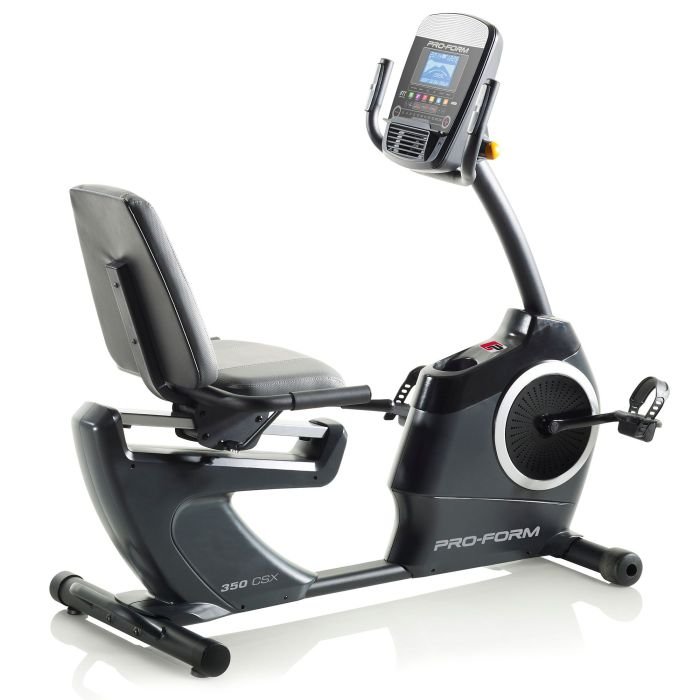
Whether you’re seeking a low-impact workout, a way to rehabilitate from an injury, or simply a comfortable way to improve your fitness, fitness recumbent bikes offer a compelling solution. With their versatility, adjustable resistance levels, and numerous health benefits, they can be an invaluable addition to your fitness routine.
User Queries
How often should I use a recumbent bike for fitness?
Aim for at least 30 minutes of moderate-intensity exercise on a recumbent bike most days of the week.
What are the risks associated with using a recumbent bike?
Recumbent bikes are generally safe, but improper use can lead to injuries. Make sure to adjust the bike properly and use it on a flat, stable surface.
Are recumbent bikes good for weight loss?
Yes, recumbent bikes can be effective for weight loss. The amount of calories burned depends on the intensity and duration of your workout.